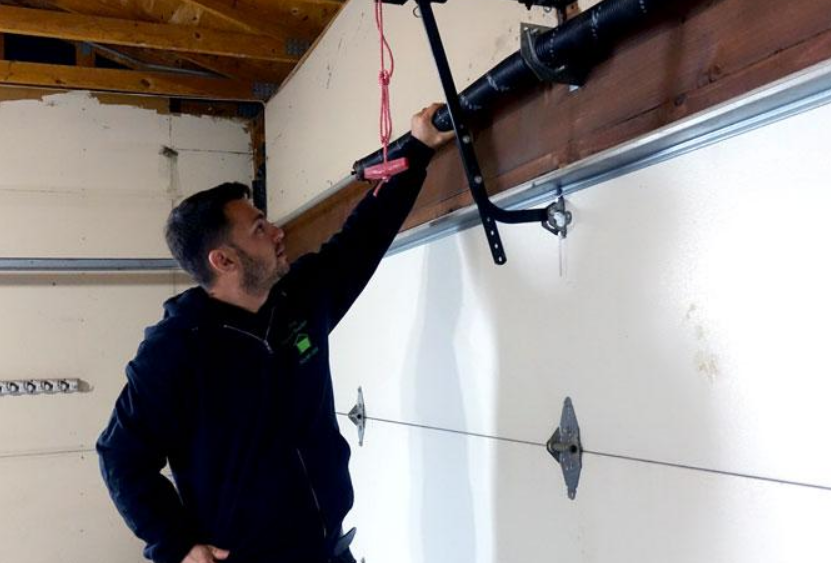Is Your Garage Door Spring Failing? How to Spot and Solve the Problem
- COMMERCIAL GARAGE DOOR REPAIR
- GARAGE DOOR OPENER INSTALLATION
- GARAGE DOOR SPRING REPAIR
- SAME-DAY GARAGE DOOR REPAIR
- CUSTOM GARAGE DOOR
- GARAGE DOOR OPENER REPAIR
- GARAGE DOOR TRACK REPAIR
- GARAGE DOOR CABLE REPAIR
- GARAGE DOOR PANEL REPAIR
- LOCAL GARAGE DOOR REPAIR
- GARAGE DOOR REPLACEMENT
- NOISY GARAGE DOOR FIX
- GATE REPAIR
- GARAGE DOOR INSTALLATION
- GARAGE DOOR SECTION REPLACEMENT
- OVERHEAD GARAGE DOOR REPAIR

Is Your Garage Door Spring Failing? How to Spot and Solve the Problem
A smoothly functioning garage door is something most homeowners might take for granted—until it suddenly stops working. One of the most common culprits behind a malfunctioning garage door is a failing spring. If you’re dealing with this issue, you’re not alone, and Clintonville Garage Door Repair is here to help. Identifying the signs of a failing spring early on can save you time, money, and a lot of frustration.
Tackling garage door spring repair requires some basic knowledge and the right approach. Springs are critical components, responsible for bearing the door’s weight and ensuring it opens and closes with ease. This blog will explain how to spot a failing spring, why repairs are essential, and what solutions are available—whether you plan to DIY the job or rely on professional assistance.
The Critical Role of Garage Door Springs
Garage door springs aren’t just another part of your door mechanism; they’re the backbone of its operation. These springs act as counterweights, balancing the heavy weight of the garage door to allow smooth and safe movement. If they fail, the entire system can grind to a halt, or worse, create unsafe conditions for your family and belongings.
Types of Garage Door Springs
Understanding the types of springs your garage door uses will help you diagnose issues effectively. There are two primary types:
- Torsion Springs
These springs sit horizontally above the door and rely on torque, or twisting force, to lift and lower the door. They’re often more durable but are under higher tension, making them trickier to repair.
- Extension Springs
Installed on the sides of the door, these spring types stretch and contract to help balance the door during operation. They’re more common in older garage door systems but tend to wear out faster than torsion springs.
By identifying which type your garage door uses, you can better understand the risks and requirements for inspection or repair.
How to Spot a Failing Garage Door Spring
Garage door springs don’t fail without warning, and catching the signs early can save you from a more serious problem. Here are some red flags to watch for:
1. The Door Feels Heavy or Won’t Stay Open
If you’ve noticed that your garage door feels unusually heavy or slams shut instead of staying open when lifted manually, it’s a clear signal the springs have lost their tension. This is especially common when one or both torsion springs are broken or extension springs are overstretched.
2. Loud Noises During Operation
A loud banging or snapping sound often accompanies a spring failure. This noise occurs when the spring breaks under tension and is immediately noticeable during or after operating the door. Squeaking sounds, on the other hand, might indicate that the springs are simply in need of lubrication.
3. Visible Wear or Damage
Visible gaps in torsion springs or overstretching in extension springs are clear indicators of wear and tear. Additionally, rust or corrosion on your springs is a sign they’re weakening and might fail soon if left unaddressed.
4. Uneven or Jerky Movement
Springs function to maintain balance. When one spring is broken or not performing well, the door may open unevenly or jerk during operation. Left unresolved, this imbalance can strain other components and exacerbate the problem.
Solving the Problem of a Failing Garage Door Spring
Once you’ve identified a failing spring, it’s time to consider your options. You can either tackle the issue yourself (with proper precautions) or rely on the skilled expertise of professionals.
1. Prioritize Safety at All Costs
Repairing or replacing garage door springs is not a simple task. Springs are under extreme tension and mishandling them can cause accidents or injuries. Whether you’re inspecting the springs or attempting a repair, always prioritize safety:
- Disconnect the door opener to avoid accidental operation.
- Clamp the door in place to prevent sudden movement.
- Use proper safety gear like gloves and goggles.
If this project feels out of your depth, professionals like Clintonville Garage Door Repair are your safest bet.
2. Use Quality Replacement Parts
When one spring fails, it’s best to replace both springs. Even if one spring seems functional, it’s likely near the end of its lifespan. Using high-quality, manufacturer-recommended parts will ensure your garage door system remains reliable over time.
3. Call in the Experts
While some homeowners may feel comfortable repairing their garage door springs, many find the process to be too complex or risky. A trusted company like Clintonville Garage Door Repair has the tools, experience, and skills necessary to resolve the issue efficiently and safely. Hiring professionals ensures the job is done right without further damaging your door system.
Final Thoughts
A failing garage door spring is more than just a minor inconvenience—it’s a potential hazard that can disrupt your daily routine. By learning how to identify the signs of a failing spring and taking prompt action, you can prevent serious damage and ensure your system continues to work reliably.
If you’re unsure about tackling garage door spring repair yourself, don’t hesitate to reach out to Clintonville Garage Door Repair. Our team of experts is dedicated to providing fast, safe, and effective solutions, so your garage door works like new again. Regular inspections and maintenance are the keys to avoiding future issues, keeping your home safe and your life hassle-free.
